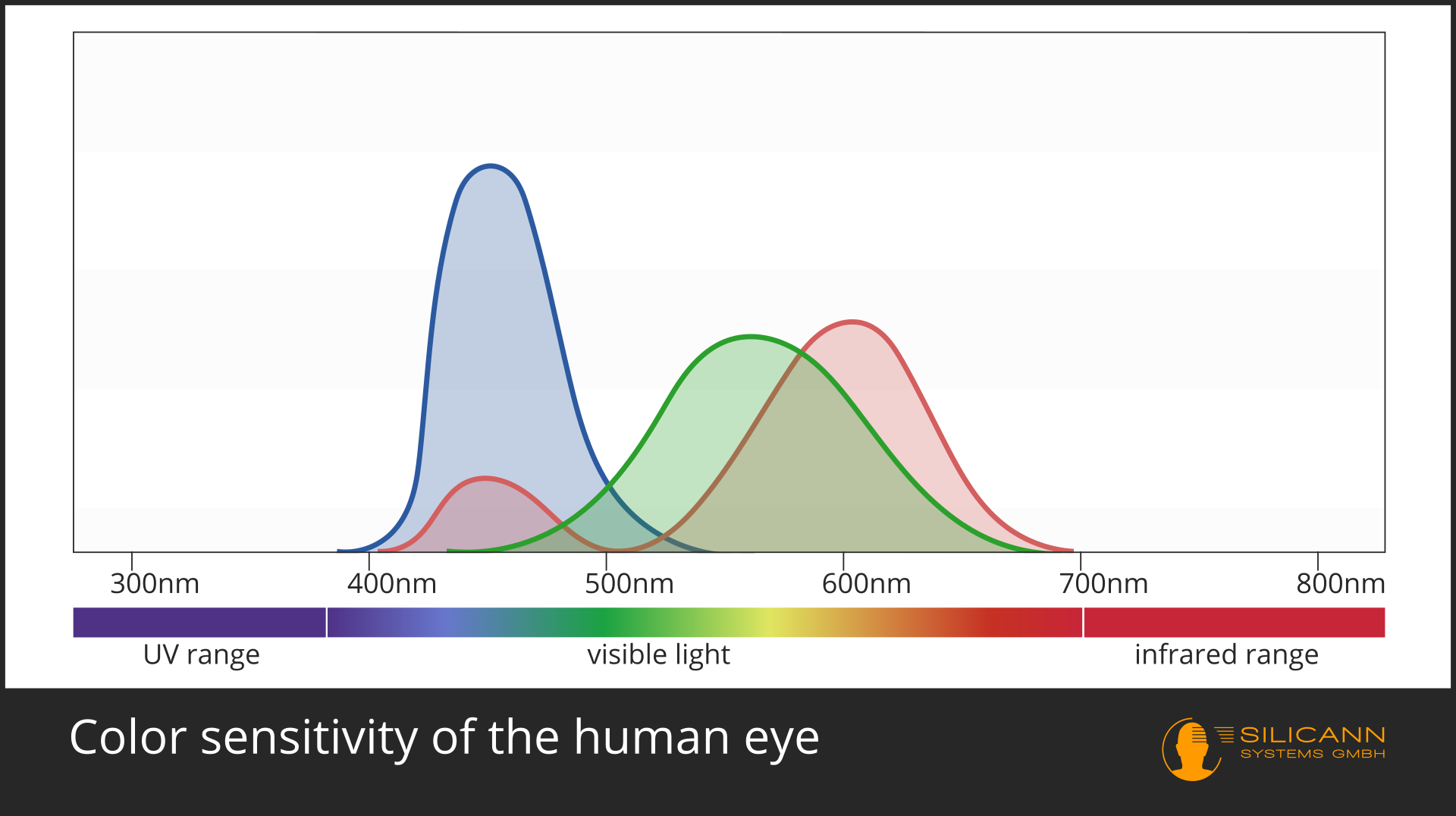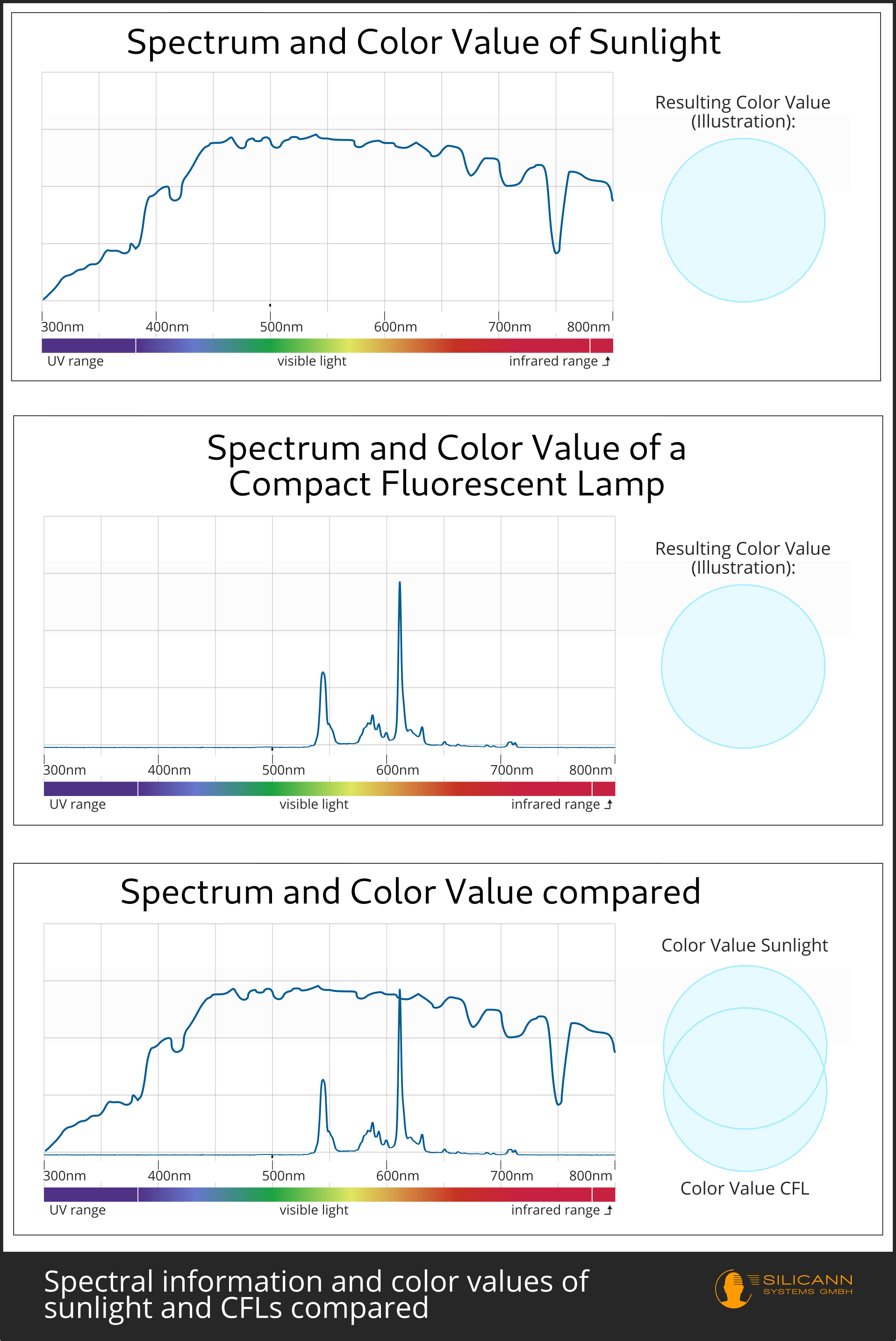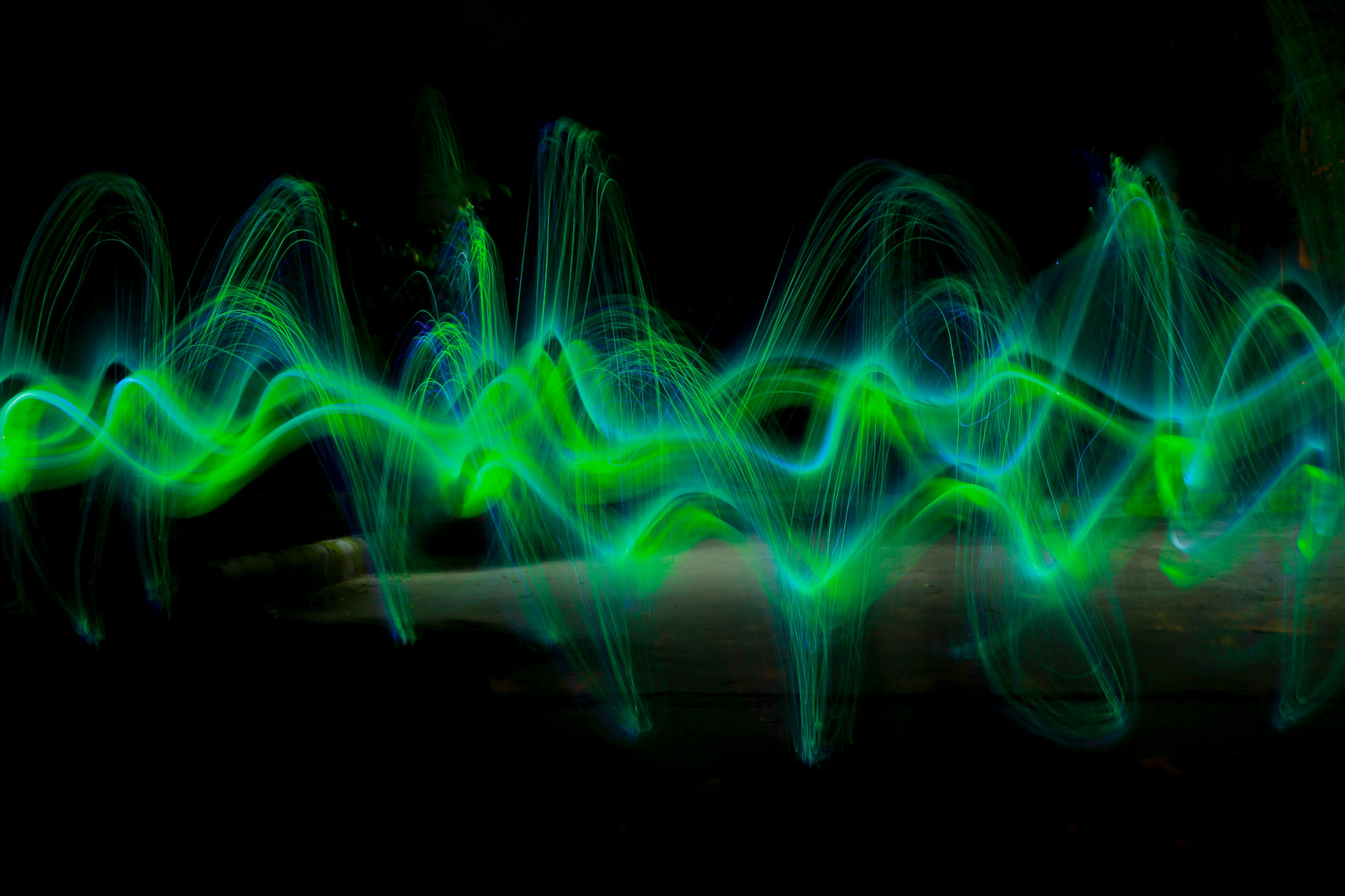Metamerism und Metamerism Index

What metamerism is, how it arises and when and by whom it was discovered has already been a topic in this blog elsewhere. As a little refresher:
What is Metamerism
Metamerism describes the phenomenon that the same object looks different depending on the incident light, i.e. it can produce a different color impression.
This does not mean the effect when you cannot distinguish a ripe fruit from an immature fruit when viewed against the light. Rather, it is about situations in which all other variables remain identical: the object lies on the same surface, the person (or the device) observing remains at the same viewing angle, the light shines from the same direction, only the type of light is changed.
Two things play an essential role here: the functioning of the human eye and the structure of visible light.
The retina in the eyes of humans (and a number of other animals) has three different receptors for receiving different wavelengths:

With these receptors we usually cover a wavelength range from approx. 400 nm (deep blue) to approx. 780 nm (deep red). The electromagnetic radiation goes much further in both directions, but our eyes can perceive this range, which we call it light. Otherwise this range does not differ from other electromagnetic radiation such as UV radiation, infrared radiation or a wifi signal.
We only have three types of receptors, but we can distinguish far more than three colors. This is because the signals from these three receptors are interconnected in a complex manner in order to be able to make as differentiated statements as possible about the visible environment. For the color yellow, for example, we have no receptors at all, but we can still see them clearly: The color impression "yellow" always occurs when the green and red receptors are stimulated to the same extent.
In addition, the individual receptors have sensitivity peaks in very narrow wavelength ranges, but overall they have a very broad spectrum to which they respond. This enables us to differentiate between royal blue and pastel blue, for example.
Light is not equal light
Despite all the interconnection finesse, in the end there are only 3 types of receptors, and for evolutionary reasons these are based on a very specific light: that of the sun. It is not entirely by chance that the range of visible light corresponds almost exactly to that spectrum of solar radiation which reaches the earth's surface with the highest intensity.
However, multiple light sources can be specifically designed in such a way that, despite the completely different spectral structure of the light, the resulting impression is practically identical to the human eye. The following illustration, for example, shows the spectral structure of sunlight compared to that of a commercially available compact fluorescent lamp:

Receptors + different types of light = metamerism
The color impression that an object creates in us is a side effect of the structure of our sense of sight and the different types of light. Rays of light reach our retina, which previously shone on the object from the light source, reflected on it and then hit our eyes. If all the light is reflected, then this would result in the color impression of pure white. In most cases, however, the surface of the object will absorb some of the incident radiation - this part is then missing in the light that reaches our eyes.
This is the moment when the different types of light become relevant: the object can only reflect and absorb whatever light actually hits it. In the spectrum of the CFL illustrated above, for example, certain light components are not present at all or only to a much lesser extent than in sunlight. Particularly in interaction with the interconnected receptor signals, this can lead to a changed color impression - the metamerism effect.
Measure color differences in the L*A*B* color space
Metamerism is undesirable in many cases. Many everyday objects consist of different components from different sources that should have the same color - not only in the artificial light of the production hall, but also outside in the sunlight or in the living room in the glow of a warm LED lamp. For a proper assessment, however, the subjective color impression of the person checking must be replaced by objective numbers, because this enables a notebook manufacturer, for example, to tell a supplier of keyboards precisely which color exactly matches the notebook housing.
The L*A*B* color space was designed for such industrial requirements. This color space is currently standardized e.g. in EN ISO 11664 (formerly also DIN 6174). In contrast to e.g. RGB color values in Photoshop and Co., color specifications in L* A*B* have the significant advantage that the color distance can be calculated two different colors. If two different color tones have the same calculated color distance, then an observing person would also report about the same deviation.
The measure of these color differences is called ΔE (for Empfindung, German for sensation). It is a dimensionless value (i.e. there is no unit like "cm" or "kg") that is calculated from the L, a and b pairs of the two individual colors. EN ISO 11664 also contains the current formula.
Metamerism index
DIN 6172: 2014-10 defines the so-called metamerism index (more precisely: the metamerism index for illuminant changes - there is also the observer metamerism and field size metamerism in addition to the illuminant metamerism) and now uses ΔE to reduce the color difference to define different types of light.
The two types of light are decisive. DIN 6172 stipulates that D65 and A should normally be used here, if there are no other specifications (e.g. due to special standards for a certain industry). There are also standards for the types of light themselves (hence D65 and A) - "daylight" can mean something completely different depending on the weather and time of year.
D65 should represent idealized daylight, a cold white with a color temperature of 6500K. Light type A is the historical yellowish incandescent lamp light, a warm white with almost 2900K.
DIN 7172 does not comment on the question of how large the metamerism index may be at most. In general, however, a ΔE of 1.0 is regarded as the limit at which the untrained eye perceives a different color impression from the two colors. For trained observers, the threshold is set as 0.5.
However, there are industry-specific standards that set their own threshold values. DIN 6175, for example, sets limit values for paintwork on auto parts and also specifies that for repair paintwork the maximum allowed color differences must not grow when changing from D65 to F11 light type.
Determining the metamerism index
In the commercial sector, the L*A*B* color values for individual objects are determined using color measuring devices. Internally, these devices are practically always spectrometers. Spectrometers (sometimes also called spectrophotometers) can record the spectrum of visible light in detail, so that they not only output the color impression in total, but also the radiation intensity for each wavelength (range) over the entire spectrum. This enables objective comparisons and, for example, purely mathematical prognoses of the metamerism effect by simulating changing types of light in software.



